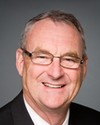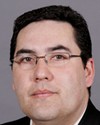Thank you and good morning, Mr. Chairman. I would like to thank you for this invitation to appear before the Standing Committee on Aboriginal Affairs and Northern Development. I'm pleased to present to you an overview of data that's available from Statistics Canada on aboriginal housing.
Before I begin, I have a note on the definitions of aboriginal populations, for there are various definitions available. The data presented to you are all based on the concept referred to as the aboriginal identity population. This is measured through a question that asks if a person is an aboriginal person, that is, North American Indian, Inuit, or Métis.
Statistics Canada has two main sources of data on aboriginal housing: the Census of Population and the Aboriginal Peoples Survey. There is far too much information available from these sources to present in the short time I have available. Rather, the objective this morning is to provide you with the main trends in the housing situation with regard to the aboriginal identity population, as well as illustrate some of the geographic and demographic characteristics attributable to the data.
Government and academic researchers examining aboriginal housing policies and programs extensively use these and other more detailed aboriginal data that are available from Statistics Canada. Canada Mortgage and Housing Corporation also derive and publish a number of key housing measures, many of which are based on census data.
The following slides, which you have in front of you, are based on data from the 2001 census and the 2001 Aboriginal Peoples Survey. These will be updated in the coming year, starting next month, with the 2006 census population and dwelling count to be released March 13, with more detailed results on the aboriginal identity population to be available next January, 2008, and results from the Aboriginal Peoples Survey off-reserve in the fall of 2008. Updates for the on-reserve component of the Aboriginal Peoples Survey will be available progressively in the coming years as reserves participate in the survey.
Following an overview of the demographic situation of the aboriginal population, I will speak to four main housing variables available from the census and the Aboriginal Peoples Survey: condition of dwelling, number of rooms, tenure, and water contamination.
In 2001, there were just over one million aboriginal people, or 3.5% of the total population—and I apologize in advance for all the numbers that I will be throwing your way. You will find them all in your handouts. Two-thirds of aboriginal people, or 713,000, were North American Indian. Métis represented 29% of the aboriginal people with 306,000, and Inuit represented 4% with 48,000.
In 2005, Statistics Canada projected the aboriginal population to the year 2017. With a projected decline in fertility rates, their population growth is expected to slow down. Nevertheless, over the projected period it will still average two and a half times that of the non-aboriginal population. The Inuit population will grow the fastest, followed by the North American Indian and the Métis populations.
In 2001, the on-reserve population represented almost one-third of all aboriginal people. By 2017, the share of those on-reserve could rise to 40% if current trends in fertility, mortality, and migration continue.
Seven out of ten aboriginal persons live off-reserve, which leaves three in ten living on reserve. Twenty-nine per cent live in large cities, 23% in smaller cities, 14% live in rural areas, while 4% live in the Arctic.
As with all census information, this type of regional breakdown is available for each of the three aboriginal groups. For example, Métis have the highest percentage living in urban areas, at 68%, and Inuit the lowest, at 27%. This compares with the 80% of all Canadians who live in urban areas.
Half of the aboriginal identity population is under 25 years of age. Age is a key demographic characteristic in the context of family formation and the related new demand for housing, as well as in the context of planning for the needs of an older population.
With a higher fertility rate than the non-aboriginal population, the aboriginal populations are younger. For example, children under 15 years of age represent one-third of the aboriginal population; in contrast, they make up only one-fifth of the non-aboriginal population.
The number of aboriginal seniors is growing, but still remains relatively small. Seniors represent 4% of the aboriginal population, compared to 13% of the non-aboriginal.
I would now like to present you with some of the data available on aboriginal housing.
I will begin with the subject of overcrowding.
Overcrowding is defined as more than one person per room.
The housing situation depends to a large extent on where one lives, thus the aboriginal housing data are provided according to the following types of geographic areas: reserves, rural areas, the Arctic, small urban areas and census metropolitan areas.
Despite a small improvement between 1996 and 2001, the proportion of aboriginal people living in overcrowded dwellings remains quite high compared to the situation of non-aboriginal people, especially on reserves and in the Arctic.
Data on overcrowding are also available for the largest urban areas, and the results vary across the country.
For the aboriginal population, the percentage of the population living in overcrowded dwellings is substantially higher in the western cities. In particular, Winnipeg, Regina, Saskatoon and Edmonton have percentages 2 to 3.5 times that of the non-aboriginal population in these cities.
In contrast, for the central cities of Montreal, Ottawa-Gatineau and Toronto, the percentage of overcrowded dwellings for the aboriginal population is equal to or lower than that for the non-aboriginal population.
We can also examine these data for the first nation communities specifically.
For all first nation communities in Canada, 35% of dwellings are overcrowded. Among provinces, the highest incidences of overcrowding for first nation communities occur in the three Prairie Provinces, followed by Quebec.
Let us now turn to housing conditions. For Canada as a whole, dwellings in need of major repairs represent about 9% of all dwellings. From the census, we can see that this percentage is much higher for the aboriginal population living in each type of geographic area presented. In particular, the proportion living in reserves, at almost 40%, is very high. In addition, the data over two censuses also show that the percentage for the reserves and for the Arctic is increasing over time. The 2006 census will indicate to what extent this trend continues.
I will now talk about dwellings as such rather than about the number of persons per dwelling.
Across Canada, one in five aboriginal dwellings needs major repairs. Among provinces, the proportion is highest in New Brunswick, where more than one in four dwellings need major repairs. The percentages for the other provinces range from 18 to 25%, with Newfoundland and Labrador, Quebec, Ontario and British Columbia having proportions below the national average of 20% for aboriginal dwellings.
If we look specifically at reserves, overall 36% of all dwellings on reserve are in need of major repairs, about the same percentage noted earlier for dwellings that are considered to be overcrowded. Compared to all aboriginal housing, on-reserve housing is about 1.5 times more in need of major repairs.
Across the provinces, Prince Edward Island and the three Prairie Provinces all have 40% or more of aboriginal dwellings in need of major repairs. Newfoundland and Labrador, Quebec, Yukon and the Northwest Territories have relatively lower proportions of dwellings in need of major repairs, with percentages under 30%.
Note that Nunavut does not have any reserves.
The status on housing conditions of aboriginal people is also available according to tenure, that is, whether the dwelling is owned or rented. Dwellings owned by aboriginal people are twice as likely to require major repairs as dwellings owned by non-aboriginal people. In general, dwellings that are rented are more in need of major repairs than those that are owned. However, whether we look at aboriginal or non-aboriginal populations, the type of geographic area, be it on-reserve, rural, or urban, has a much larger impact on the need for major repairs than whether it is owned or rented.
In the Aboriginal Peoples Survey, respondents were asked whether or not they felt their water was contaminated at certain times of the year. According to the 2001 Aboriginal Peoples Survey, 18% of aboriginal persons living off-reserve said there were times of the year when their water was contaminated. At 37%, the proportion was twice as high for aboriginal persons living in the Arctic. The percentages for those living in other rural and urban areas were relatively close to the off-reserve average of 18%. So there are lots of numbers.
In summary, housing conditions for aboriginal peoples are much more severe than for the general population, especially on-reserve, in rural areas, and in the Arctic, where the proportion of houses needing major repairs is at least three times higher than the Canadian average. Dwellings owned by aboriginal people are twice as likely to require major repairs as dwellings owned by non-aboriginal people. Overcrowding of aboriginal dwellings remains quite high compared to the situation of non-aboriginal people, despite a small improvement between 1996 and 2001, especially on-reserve and in the Arctic.
This concludes my presentation. My colleague Marie and I will be glad to answer any questions that you may have.
Thank you.




